You may know what I’m about to show, but for the benefit of those who don’t know… Any modifications will be done to the chuck/backplate not to the lathe spindle. I am going to use the term ‘’chuck’’ to mean either the actual chuck in the case of a direct mount or the backplate depending on the style.
First check the spindle to make sure everything is OK there, it would be rare if there were problems with the spindle.
First let’s understand some of the pieces to the puzzle
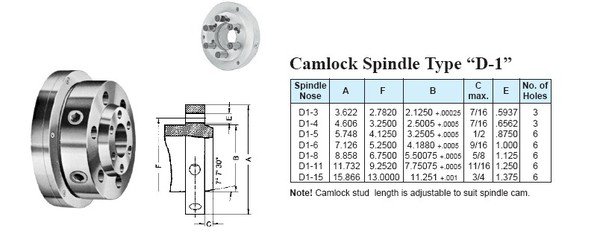
The mating surfaces. The nose taper should contact just before the flange pulls up tight, maybe 0.001 or so.
Get a measurement on the nose depth here that you will use later
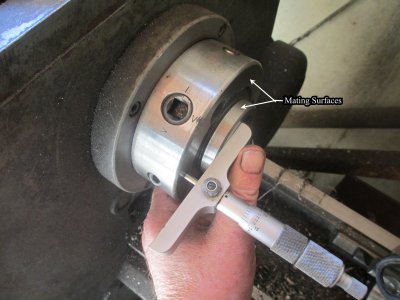
When the cam is tight, the cam index mark should always wind up between the Index Limits, if it does not, then you need to adjust the Stud Bolt depth
I have a witness mark (1) on my spindle, and I always mark my chucks once I get them dialed in so I can mount them in the same orientation each time.
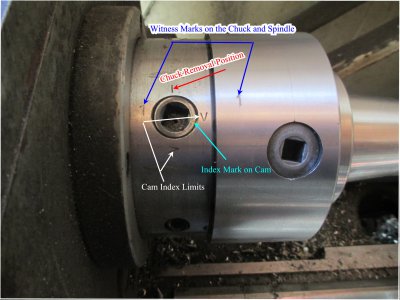
To adjust the Stud Bolt depth, remove the lock screw and screw the Stud Bolt in or out as needed, normally 1 turn either way will do. Then remount the chuck, and check the position of the Index mark, rinse/repeat as needed. The lock screw does not lock the Stud Bolt tight, it only keeps it from rotating too much, and the Stud Bolt will turn a bit.
Check the clearance between the Spindle Nose depth and the taper bore of the chuck. There should be a fair amount of clearance, the Spindle Nose should not bottom out.
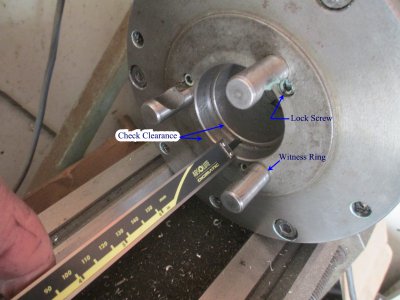
Now you can check the fit. First, do the mating flanges pull up tight? If not, then see below. If so then you can check the fit on the taper. The easiest way to do this is to mount the chuck. Then using a dial indicator, find the high point and mark it with a magic marker. Then smack the chuck with a deadblow hammer and see if the high point moves. Do this in each quadrant. If the chuck doesn’t move, then everything is mated properly and you’re done.
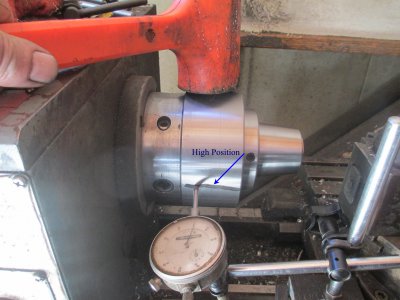
If the chuck does move, then you need to remove some material from the flange to seat the taper a bit deeper. Without a gauge to check the relationship, it has to be done by removing some material, by facing the flange, just a thou or so, and then rechecking the fit on the spindle.
If the taper bore is too small and the flange won’t mate up then you will have to re-bore the taper. The taper is 7 degrees, 7 minutes, 30 seconds. So how do you set you compound to match that? The easiest way is to use a dial indicator on the Spindle Nose and rotate the compound while dialing in and out to get a zero reading through the travel.
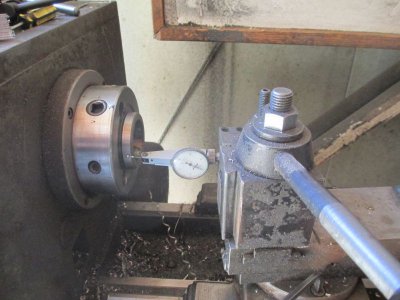
Just take off a thou or so, then recheck. The easy way to set up is to mount the chuck on a shaft in another chuck. This also insures that anything you do will be in-line with the chuck jaws.
If you’re working on a backplate, then once the machining on the back is completed, you may have to refit the backplate to the chuck.
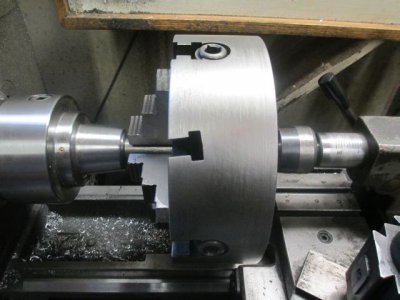
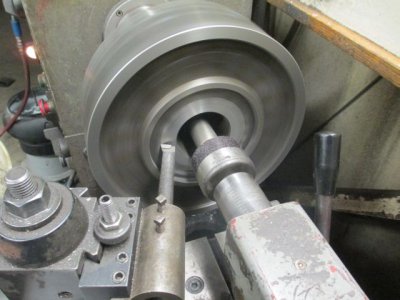
This is a long process, but in the end it will be worth it.









